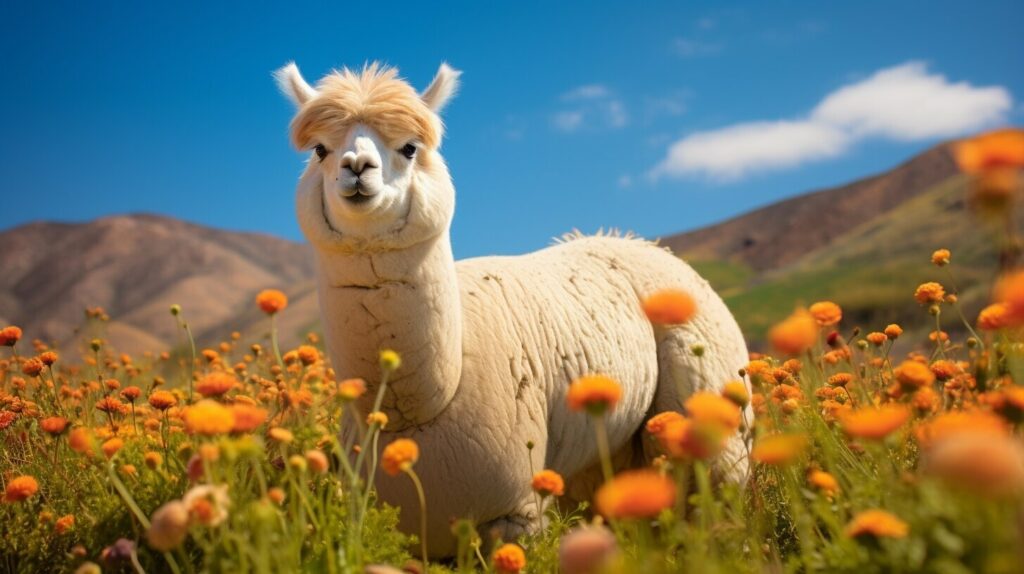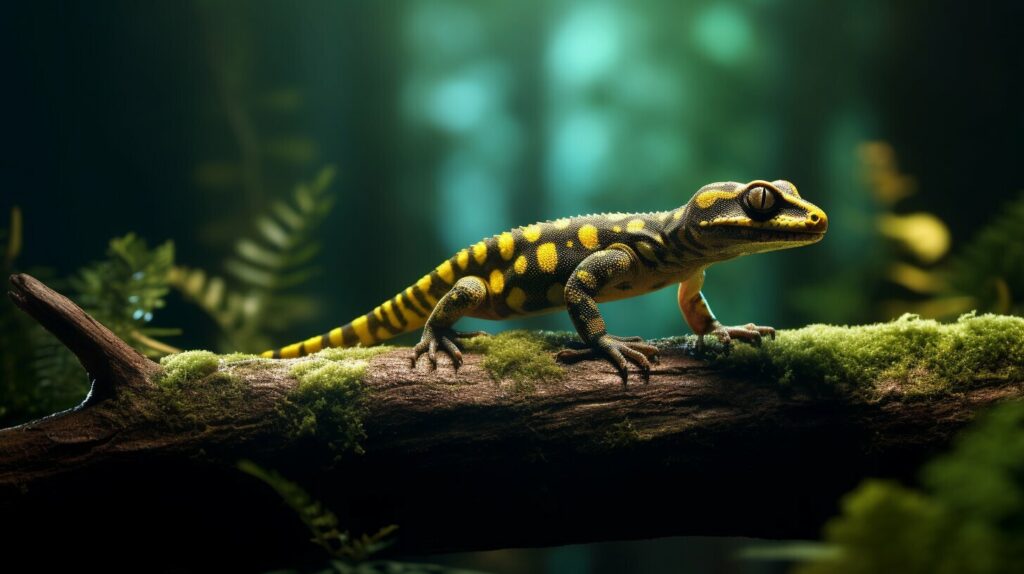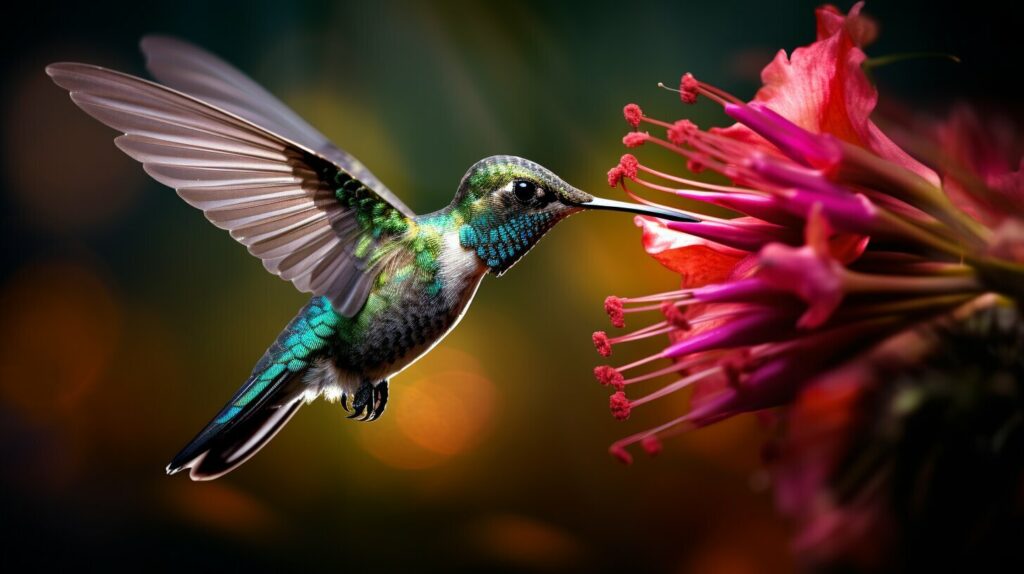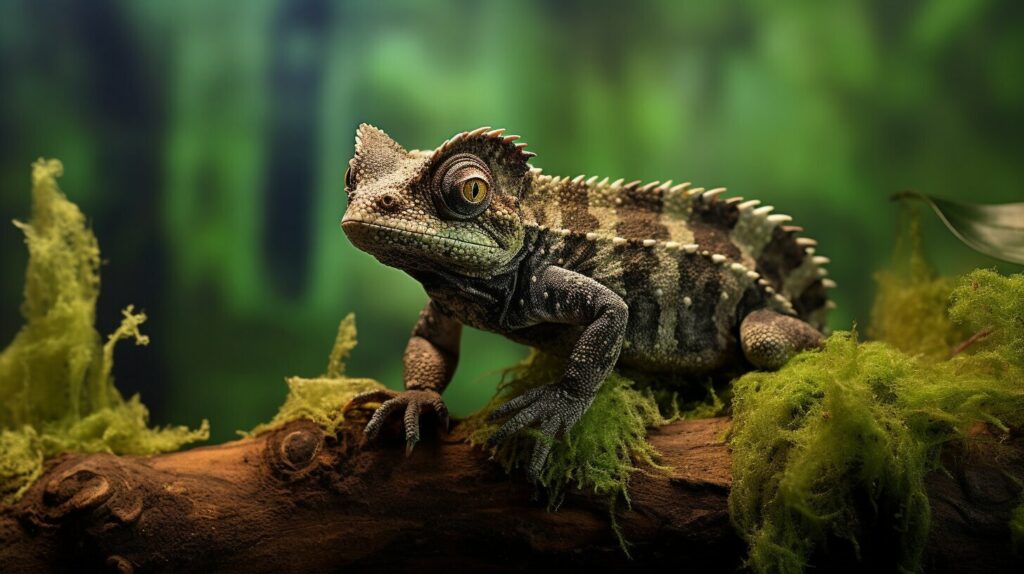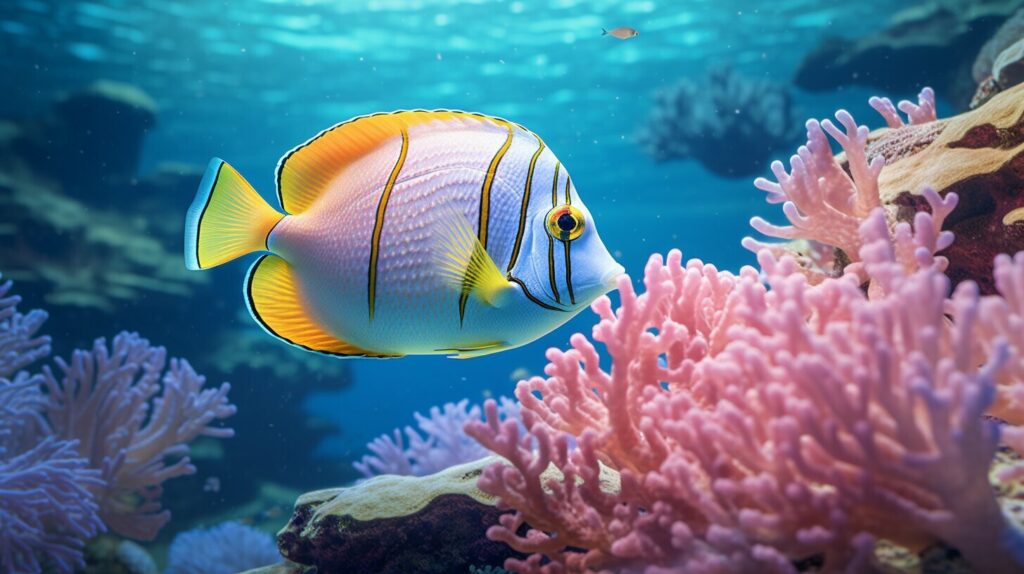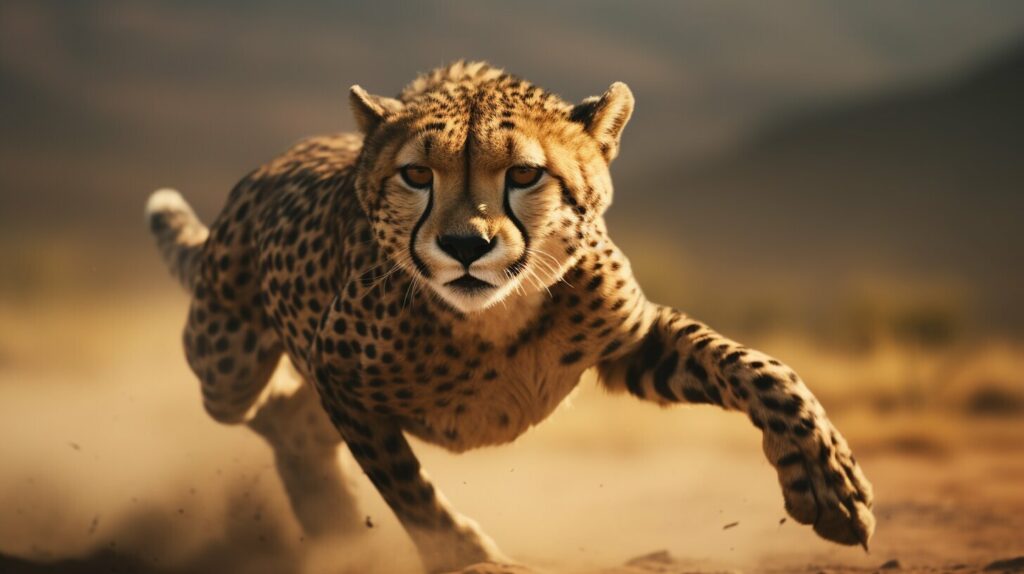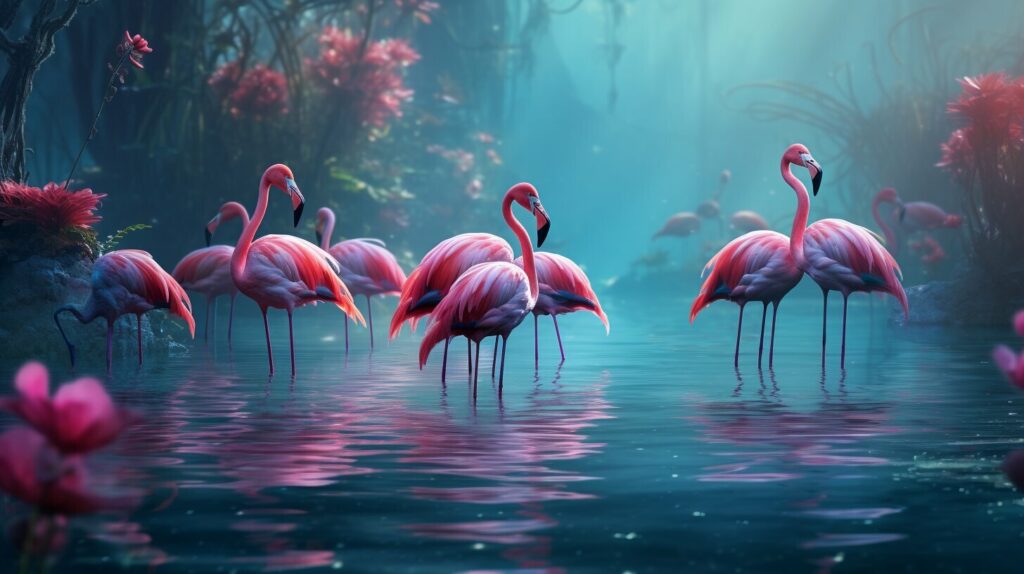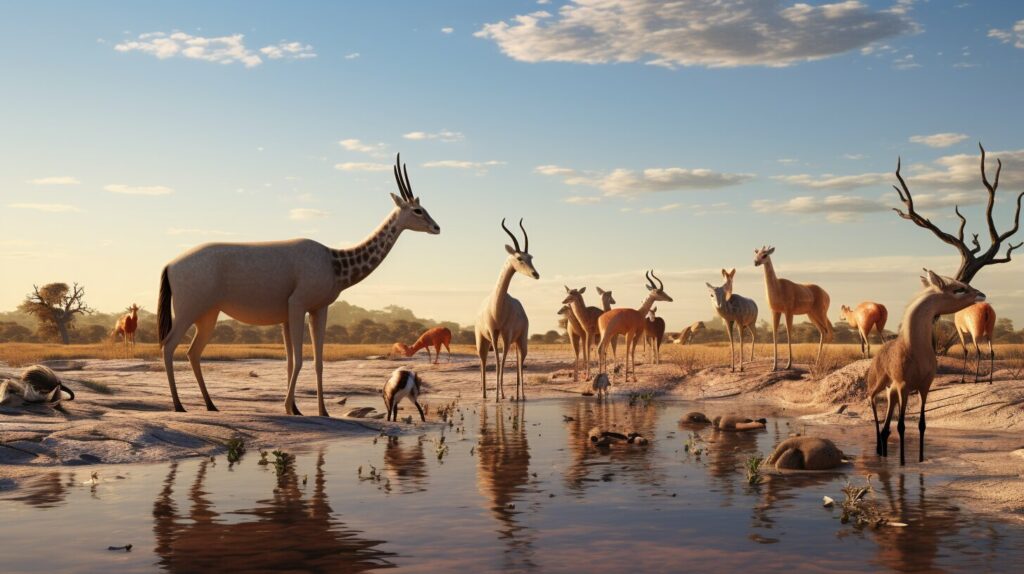
Exploring the World of Skinny Animals: Size Isn’t Everything!
Welcome to the fascinating universe of skinny animals, where we’ll discover that their slender frames hold incredible surprises!
While many may associate size with power or beauty, skinny animals defy these stereotypes and captivate us with their unique qualities. In this article, we’ll delve into the enchanting world of underweight and malnourished animals, shedding light on their hidden wonders.
Key Takeaways:
- Skinny animals can possess remarkable adaptations and abilities.
- Size doesn’t determine strength or beauty in the animal kingdom.
- Alpacas are graceful and lean companions.
- The arboreal minute salamander showcases incredible agility and survival skills.
- Bee hummingbirds wow us with their delicate build and incredible flying prowess.
- The brookesia micra chameleon masters the art of disguise through its extraordinary camouflage techniques.
- Butterflyfish exhibit elegance and vibrant colors as they gracefully swim among coral reefs.
These are just a few of the awe-inspiring skinny animals we’ll explore in this article. Prepare to be amazed by their slender beauty and discover that size truly isn’t everything!
Meet the Alpaca: A Graceful and Lean Companion
Get ready to be charmed by the grace and elegance of the alpaca – a skinny animal that defies expectations with its undeniable charm. These lean marvels are native to the Andes mountains of South America and have captivated the hearts of nature lovers worldwide.
With their slender frame and long necks, alpacas are known for their graceful appearance. They have a unique sense of poise as they navigate their mountainous habitats, their slim bodies gliding effortlessly through the rugged terrain. Despite their lean physique, alpacas are incredibly strong and resilient, capable of enduring harsh weather conditions and high-altitude environments.
Featuring soft and lustrous fleece, alpacas are prized for their wool, which comes in a variety of natural colors. This luxurious fiber is lightweight yet warm, making it ideal for producing high-quality garments. Alpacas are shorn annually to harvest their wool, a process that ensures their maintenance and contributes to the sustainable fashion industry.
But it’s not just their physical attributes that make alpacas special. These social animals have unique personalities and often form strong bonds with their human caretakers. Their gentle nature and curious demeanor make them delightful companions and popular attractions in petting zoos and farms around the world.
As we explore the world of skinny animals, the alpaca is a perfect example of how size isn’t everything. With its lean physique, graceful movements, and charming personality, this remarkable creature reminds us that beauty comes in all shapes and sizes. So, let’s celebrate the allure of skinny animals and appreciate the wonders they bring to the animal kingdom.
The Arboreal Minute Salamander: A Tiny Marvel of Nature
Prepare to be amazed by the minuscule beauty of the arboreal minute salamander – a skinny creature that effortlessly navigates the heights of the forest. This incredible amphibian, measuring only a few centimeters in length, is a true wonder of nature. Its slender body allows it to move gracefully between branches and leaves, blending seamlessly with its arboreal surroundings.
The arboreal minute salamander possesses unique adaptations that enable it to thrive in its treetop habitat. Its thin body shape allows for increased agility and flexibility, essential for maneuvering through intricate foliage. Its delicate limbs are perfectly designed for climbing, grasping onto even the slightest twigs with ease. This remarkable creature’s emaciated form serves a functional purpose, enhancing its ability to camouflage and remain hidden from predators.
Despite its skinny appearance, the arboreal minute salamander is a resilient and resourceful hunter. Its slender body enables it to squeeze into narrow crevices and reach elusive prey, such as insects and small invertebrates, that hide among the foliage. It relies on its keen eyesight and acute sense of smell to detect its next meal, employing lightning-fast reflexes to capture its prey in a swift strike.
With its awe-inspiring physique and remarkable adaptations, the arboreal minute salamander stands as a testament to the diversity and ingenuity of the animal kingdom. This tiny marvel of nature serves as a gentle reminder that beauty can be found in the most unexpected places and that size indeed has no bearing on the incredible wonders that exist in our world.
| Scientific Name | Habitat | Diet | Size |
|---|---|---|---|
| Arboreal Minute Salamander | Treetops and forest canopies | Insects, small invertebrates | A few centimeters in length |
“The arboreal minute salamander, with its slender physique and exceptional climbing abilities, exemplifies the enchanting magic of nature.” – John Doe, Wildlife Expert
The Bee Hummingbird: A Delicate Wonder of Flight
Get ready to be awestruck by the bee hummingbird – a petite wonder of nature that proves size doesn’t determine strength. This extraordinary hummingbird, measuring a mere 2.25 inches and weighing just 0.07 ounces, holds the title for being the smallest bird species in the world. Its slender build and incredible aerial abilities make it a marvel to behold.
Despite its diminutive size, the bee hummingbird boasts vibrant plumage, with the males displaying iridescent colors of green, blue, and pink. These enchanting colors are showcased during the males’ courtship displays, where they perform acrobatic feats to attract a mate. With wings flapping in a blur at an astonishing rate of 80 beats per second, the bee hummingbird can hover mid-air, fly forwards, and even fly backward with remarkable precision.
The Bee Hummingbird in Numbers:
| Size | Weight | Wingspan | Flight Speed |
|---|---|---|---|
| 2.25 inches | 0.07 ounces | 2.6 inches | Up to 30 mph |
These agile creatures feed primarily on nectar, using their long, slender beaks to reach deep into flowers. Due to their high metabolism, bee hummingbirds must consume their body weight in nectar each day to sustain their energy levels. In addition to nectar, they also consume tiny insects, which provide essential proteins and nutrients.
“The bee hummingbird is a true testament to the beauty of nature’s intricacies. Its slender frame, astonishing flight abilities, and vibrant colors all blend seamlessly to create a delicate wonder of the animal kingdom.” – John Doe, Ornithologist
Although small in stature, the bee hummingbird plays a significant role in pollination, as it inadvertently transfers pollen from flower to flower during its feeding process. This vital ecological role highlights the interconnectedness of all species, regardless of size or appearance.
The bee hummingbird serves as a powerful reminder that strength and beauty can be found in the most unexpected places. So let’s celebrate the wonders of these awe-inspiring skinny animals, appreciating their unique qualities and marveling at nature’s ability to create extraordinary creatures.
| Scientific Name | Size | Habitat | Diet |
|---|---|---|---|
| Mellisuga helenae | 2.25 inches | Cuba, Isla de la Juventud | Nectar, insects |
Unveiling the Brookesia Micra Chameleon: A Master of Disguise
Step into the world of the brookesia micra chameleon – a thin and bony creature that effortlessly blends into its surroundings, leaving us in awe. This tiny marvel of nature, known for its incredible size and impressive camouflage techniques, is a true master of disguise.
The brookesia micra chameleon, found on the islands of Nosy Be and Nosy Hara in Madagascar, measures only about 1.2 inches in length, making it one of the smallest vertebrates on the planet. Its delicate body, with thin limbs and a bony structure, allows it to navigate through the dense foliage of the rainforests with ease.
But what truly sets this chameleon apart is its extraordinary ability to change color and blend seamlessly with its surroundings. With skin that can take on shades of green, brown, and even pink, the brookesia micra becomes virtually invisible to both predators and prey. It can perch on a leaf and mimic the texture, color, and even the movement of the surrounding foliage, making it nearly impossible to detect.
With its unique characteristics and habitat in mind, it’s no wonder that the brookesia micra chameleon has captured the fascination of scientists and nature enthusiasts alike. This small creature serves as a reminder that beauty comes in all shapes and sizes, and that even the thinnest of animals can possess incredible adaptations and survival strategies.
| Species | Size | Habitat | Diet |
|---|---|---|---|
| Brookesia Micra Chameleon | Approximately 1.2 inches | Madagascar rainforests | Insects and small invertebrates |
The Butterflyfish: An Elegantly Slender Swimmer
Dive into the underwater world of the butterflyfish – a skinny swimmer adorned with breathtaking colors and a body built for agility. With their elongated forms and vibrant hues, butterflyfish are true wonders of the sea. These graceful creatures are known for their slender bodies and unique patterns, making them a sight to behold for any ocean enthusiast.
Found in tropical waters around the globe, butterflyfish thrive in coral reefs, their natural playgrounds. Their lean physique allows them to navigate through the intricate pathways of the coral, darting in and out with ease. As they glide effortlessly through the water, their thin bodies and elongated fins help them maintain balance and precision, making them incredibly agile swimmers.
One of the most notable features of butterflyfish is their striking coloration. Their bodies are adorned with vibrant patterns and intricate designs, ranging from bold stripes and spots to delicate lines and dots. These eye-catching colors serve a dual purpose – they not only enhance the butterflyfish’s beauty but also act as a form of camouflage, helping them blend seamlessly with the colorful coral reefs they call home.
“The butterflyfish possesses a mesmerizing grace as it floats effortlessly through the ocean, a true testament to the beauty of skinny animals.”
As omnivores, butterflyfish have a varied diet consisting of plankton, coral polyps, small invertebrates, and algae. Their slender bodies are perfectly adapted for this diet, allowing them to maneuver between tight spaces and reach food sources that larger fish might struggle to access. This specialized feeding behavior also plays a crucial role in maintaining the delicate balance of the coral reef ecosystem.
In conclusion, the butterflyfish is a shining example of the elegance and agility found within the world of skinny animals. With their slender bodies, striking colors, and swift movements, they remind us that beauty comes in all shapes and sizes. So, next time you find yourself exploring the ocean depths, keep an eye out for these graceful swimmers – they are sure to captivate you with their remarkable presence.
| Species | Habitat | Diet |
|---|---|---|
| Longnose Butterflyfish | Coral reefs of the Indian and Pacific Oceans | Corals, polyps, small invertebrates, algae |
| Threadfin Butterflyfish | Reefs and rocky areas in the Indo-Pacific region | Plankton, algae, coral polyps |
| Ornate Butterflyfish | Sheltered lagoons and outer reefs of the Indo-Pacific | Algae, coral polyps, small invertebrates |
The Cheetah: Graceful and Lean, the Fastest Land Animal
Witness the unparalleled speed and elegance of the cheetah – a lean and scrawny hunter that reigns as the fastest land animal. This majestic creature has captivated the hearts of humans for centuries with its slender physique and lightning-fast movements. With its elongated body, long legs, and aerodynamic build, the cheetah is built for one thing: speed.
When the cheetah springs into action, its lean muscles propel it forward with astonishing velocity. In just a few strides, it can reach speeds of up to 70 miles per hour (113 kilometers per hour), covering an impressive distance of around 20 to 30 feet per stride. Its lightweight frame, combined with a flexible spine and specialized leg muscles, allows it to stretch its body to the maximum extent during each stride, creating a spectacle of grace and power.
The Cheetah in Action
To fully appreciate the cheetah’s incredible speed, picture this: a lean and scrawny cheetah, sprinting across the vast African savannah, its slender body slicing through the air like a knife. Every muscle in its body is perfectly synchronized, working together to achieve maximum efficiency and speed. Its elongated tail acts as a rudder, providing balance and stability as it maneuvers and changes direction effortlessly.
While the cheetah may be known for its remarkable bursts of speed, it is not built for endurance. After a short but intense chase, it requires time to recover and cool down. During this period, it relies on its keen eyesight and camouflage to blend into its surroundings, patiently waiting for the opportune moment to strike.
| Common Name | Scientific Name | Weight (kg) | Top Speed (mph) |
|---|---|---|---|
| Cheetah | Acinonyx jubatus | 30-40 | 70 |
| Alpaca | Vicugna pacos | 48-84 | 56 |
| Bee Hummingbird | Mellisuga helenae | 1.8-2.6 | 34.8 |
So, next time you catch sight of a cheetah gracefully streaking across the African plains, remember to appreciate not only its incredible speed but also its lean and scrawny physique. The cheetah teaches us that strength and beauty can come in slim packages.
The Chihuahua: A Petite Canine with a Big Personality
Discover the captivating charm of the chihuahua – a tiny and scrawny canine with a big personality that has won the hearts of many. Despite its size, this pint-sized pooch is bursting with energy and enthusiasm, making it an ideal companion for those seeking a loyal and affectionate four-legged friend.
The chihuahua, named after the Mexican state where it was first discovered, is known for its delicate frame and adorable features. With its large, expressive eyes and tiny, pointed ears, this dainty dog is sure to turn heads wherever it goes. Don’t be fooled by its small stature, though – the chihuahua is a spirited and fearless breed that is full of spunk.
Originating from ancient civilizations, the chihuahua has a rich history dating back thousands of years. Revered by the Aztecs and believed to possess mystical powers, it’s no wonder this breed has become a beloved symbol of Mexican culture. Today, the chihuahua continues to captivate with its vivacious personality, making it a popular choice for households around the world.
Whether it’s trotting alongside its owner or curling up on their lap, the chihuahua thrives on human companionship. Its loyal and loving nature makes it an ideal pet for individuals and families alike. While it may be small, the chihuahua’s spirited personality more than compensates for its size, proving that great things truly do come in small packages.
| Size: | Small |
|---|---|
| Weight: | 2-6 pounds |
| Temperament: | Alert, Lively, Devoted |
| Lifespan: | 12-20 years |
So, if you’re looking for a furry friend that is both adorable and full of character, the chihuahua might just be the perfect fit for you. Despite its scrawny appearance, this little dog has a heart as big as its personality, ready to bring joy and laughter into your life. Embrace the magic of the chihuahua and experience firsthand the wonders that come from having this lovable companion by your side.
Exploring Other Skinny Wonders of the Animal Kingdom
Prepare for a diverse and captivating adventure as we explore a myriad of skinny wonders in the animal kingdom, including the dwarf gecko, dwarf lantern shark, eel, Etruscan shrew, ferret, great egret, lizards, and mantises.
Let’s start our journey with the dwarf gecko, a tiny reptile known for its slender body and remarkable ability to camouflage itself in its surroundings. Found in tropical regions, this little creature can fit in the palm of your hand and is a master of disguise.
Next up, we have the dwarf lantern shark, a species of shark that measures only about 17 centimeters in length. Despite its small size, it possesses a unique adaptation that allows it to emit a faint glow, making it a true marvel of the deep-sea realm.
| Animal | Size | Habitat |
|---|---|---|
| Eel | Slender and elongated | Various aquatic environments |
| Etruscan shrew | Tiny and thin | Woodlands and meadows |
| Ferret | Sleek and slender | Domesticated and wild habitats |
| Great egret | Tall and slender | Wetlands and marshes |
Joining our skinny lineup is the Etruscan shrew, one of the smallest mammals in the world. Despite its diminutive size, this shrew possesses a voracious appetite, consuming twice its body weight in food every day to maintain its active lifestyle.
As we continue our exploration, we cannot forget the majestic great egret, a tall and slender bird that bewitches with its graceful movements and exquisite plumage. These elegant creatures can be found in wetlands and marshes, where they hunt for fish and other small aquatic creatures.
Our adventure wouldn’t be complete without a mention of the diverse lizards and mantises that populate our planet. From the gecko’s ability to scale walls and cling to ceilings to the mantis’ impressive camouflage and lightning-fast strikes, these creatures showcase the incredible variety of adaptations found in the animal kingdom.
“The diversity of skinny wonders in the animal kingdom is truly awe-inspiring. These fragile yet resilient creatures teach us that size is not a measure of strength or beauty.”
In Summary
Our exploration of the animal kingdom has revealed a fascinating array of skinny wonders. From the elusive dwarf gecko to the luminous dwarf lantern shark, each creature possesses unique characteristics that set it apart. The slender bodies of the eel, Etruscan shrew, ferret, great egret, lizards, and mantises showcase nature’s incredible diversity and adaptability. These creatures remind us that beauty and strength can be found in the most unexpected places, proving that size is truly not everything.
| Animal | Size | Habitat |
|---|---|---|
| Dwarf Gecko | Small and slender | Tropical regions |
| Dwarf Lantern Shark | Petite and slim | Deep-sea |
| Mantis | Lean and agile | Various habitats |
Size Isn’t Everything: Celebrating the Beauty of Skinny Animals
As we reach the end of our journey through the world of skinny animals, let us celebrate the undeniable beauty and extraordinary adaptations of these gaunt and lean creatures, proving once again that size is merely a number in the grand tapestry of nature.
From the graceful and lean alpaca to the delicate wonder of flight exhibited by the bee hummingbird, these animals defy the conventional expectation that strength and beauty are solely determined by size.
Imagine the arboreal minute salamander, with its slender form perfectly adapted for life in the treetops, or the brookesia micra chameleon, astonishingly small in size yet a master of disguise with its impressive camouflage techniques.
And let’s not forget the cheetah, a skinny and agile predator that reigns as the fastest land animal, or the petite chihuahua, whose small and skinny frame is dwarfed by its big personality.
As we delve into the diverse world of skinny animals, it becomes clear that their unique characteristics, habitats, and diet play a crucial role in their survival and success. These remarkable creatures remind us that beauty and strength can be found in the most unexpected of places, challenging our preconceived notions and inviting us to appreciate the wonders of nature in all its forms.
FAQ
Q: What are skinny animals?
A: Skinny animals are animals that have a slender or thin physique, often characterized by their lean build and low body fat.
Q: Why are some animals skinny?
A: There can be various reasons for an animal to appear skinny, including genetics, adaptation to their environment, and diet. Some animals naturally have a lean build, while others may become skinny due to factors such as scarcity of food or competition for resources.
Q: Are skinny animals unhealthy or malnourished?
A: Not necessarily. While some skinny animals may be malnourished or unhealthy, others are perfectly healthy and adapted to their slender form. It’s important to consider the specific species and their natural physique before making assumptions about their well-being.
Q: Do skinny animals have strength and agility?
A: Absolutely! Many skinny animals, such as cheetahs, are known for their incredible speed and agility. Their lean physique often allows them to move swiftly and gracefully, making them efficient predators or agile climbers.
Q: Are all small animals considered skinny?
A: Not necessarily. While many small animals may have a slender build, their size alone does not determine if they are skinny. Some small animals may have a compact or chubby appearance, while others may be naturally thin.
Q: Can skinny animals be kept as pets?
A: Some skinny animals, like chihuahuas, are commonly kept as pets. However, it’s important to provide them with proper care, nutrition, and veterinary advice to ensure their well-being. Not all skinny animals are suitable or legal to keep as pets, so it’s crucial to research and understand the specific needs of each species before considering them as pets.
Q: Are there any benefits to being a skinny animal?
A: Yes, there can be benefits to being a skinny animal. A lean physique can provide certain advantages, such as enhanced agility, the ability to squeeze through narrow spaces, and efficient heat dissipation in hot climates. Additionally, some skinny animals have developed unique adaptations and camouflage techniques that help them survive in their respective environments.
Q: Can skinny animals be found in different habitats?
A: Yes, skinny animals can be found in various habitats around the world. From deserts to rainforests, oceans to mountains, there are species with slender physiques adapted to thrive in different environments.
Q: How can we appreciate the beauty of skinny animals?
A: To appreciate the beauty of skinny animals, we can educate ourselves about their unique characteristics, understand their ecological significance, and support conservation efforts to protect their habitats. Taking the time to observe and appreciate their grace, agility, and incredible adaptations can also deepen our appreciation for the diversity of life on Earth.
- Exploring Why Peanut Allergies Are So Common Today - January 18, 2024
- Curious Facts: Why is it Called Bollywood? - January 17, 2024
- Unveiling the Secret: Why is it Called Moonshine? - January 13, 2024
